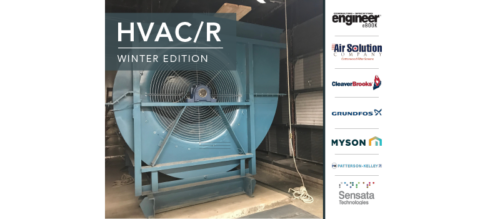How to specify motors for more efficient HVAC systems
By learning how to correctly calculate motor size and HVAC pressure drops, engineers can specify systems that save building owners energy and money
Learning objectives:
- Provide the engineer with methodology to more accurately determine the horsepower needed to specify motors.
- Understand how to calculate loads correctly for motors and drives. Know how to calculate pressure drop within HVAC ducts. Review the SMACNA guidelines on how to conduct these calculations.
- Look at how decreasing motor horsepower can more effectively decrease cost and improve efficiency.
- Consider examples in which HVAC systems have been designed to be more efficient by specifying the correct motors.
If several smaller horsepower motors are designed into an HVAC system, then the engineer can design for 35% to 40% savings over specifying a variable frequency drive. While this might seem counterintuitive, engineers must understand how to correctly conduct the engineering calculations. These calculations are vital at the onset of any project, and allow facility managers and building owners to understand where money is saved.
Energy-efficient motors can be up to 96% efficient at full load, while a standard motor will be 85% to 92% efficient.
If you are able to exactly size a motor to the load, the VFD may operate at full load at which it will have an operating efficiency of around 98%. If the motor is sized exactly to the load, then a VFD would no longer be necessary because no reduction in speed would be required.
A 50 hp motor, at NEMA Premium efficiency, operating at 50% load will be 92% efficient. To operate at 50% load, a VFD would have to be specified to improve energy efficiency. The VFD operating at 50% of full load would be operating at 90% efficiency, a loss of another 10%. If the engineer originally designed the system with a 25 hp motor, you could accrue the 50% savings from operating a 50 hp motor at 25 hp, plus you would gain the loss differential by operating the 25 hp motor at full load, plus the losses of the VFD.
The building owner and facility manager is interested in learning about eliminating costs, such as removing or reducing VFDs purchased for the project, as well as a reduction in energy or electrical costs. Energy costs are lowered by selecting lower-horsepower motors and by removing the VFD from operation.
Presenter:
Kenneth Lovorn, PE, Lovorn Engineering Associates, South Carolina
Ken Lovorn is principal and owner of Lovorn Engineering Associates. He has more than 40 years of progressive design and engineering management experience with architect-engineers and consulting engineers designing electrical systems. He was a long-time member of the Consulting-Specifying Engineer editorial advisory board.
Do you have experience and expertise with the topics mentioned in this content? You should consider contributing to our CFE Media editorial team and getting the recognition you and your company deserve. Click here to start this process.





